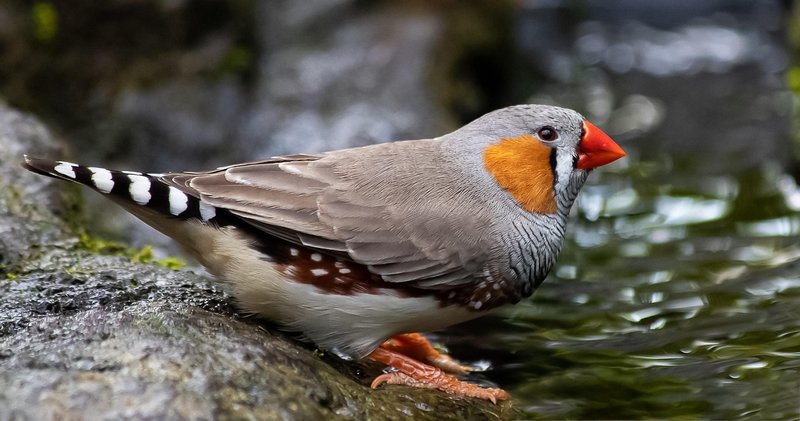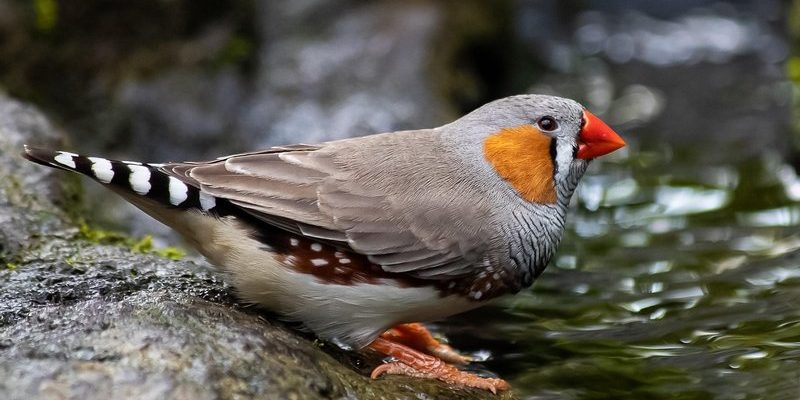
In the world of birds, there’s a diverse cast of characters, and it can be a bit confusing to tell them apart. Just like how every coffee blend has its own unique flavor profile, each bird has special traits that set it apart. So, let’s dive into the differences between the zebra finch and other similar bird species. We’ll explore their appearances, behaviors, and habitats in a way that’s easy to digest—like enjoying your favorite cup of coffee!
Physical Characteristics of Zebra Finches
Zebra finches are undeniably cute, and their appearances are one of the first things you might notice. They usually have a small, stout body with a distinctive gray-brown color adorned with striking black and white stripes—hence the name “zebra.” Males sport a vibrant orange patch on their cheeks, while females typically have a more subdued look.
Their size is another key feature. Typically, zebra finches measure about 4.5 inches long, which makes them quite petite. This small stature allows them to flit effortlessly through their habitats. Interestingly, their beaks are bright red, which is a standout trait. These beaks are not just pretty; they play a crucial role in their feeding habits.
When comparing them to similar species, like the society finch, zebra finches have a more pronounced stripe pattern, especially on their wings. The society finch, on the other hand, is more muted in color and lacks those vibrant cheek patches. These visual differences can help you distinguish between the two when you spot them in the wild or in a pet store.
Behavior and Social Structure
Zebra finches are incredibly social creatures. They thrive in flocks, and it’s not uncommon to see them interacting with each other through chirps and playful antics. Think of them as the lively group of friends at a café, chatting and laughing together. They have a complex social structure, often forming monogamous pairs for life.
You might be wondering how this compares to other birds. Take the budgerigar, or budgie, for example. While budgies are also social, they are more vocal and playful, engaging in longer conversations. In contrast, zebra finches communicate mainly through short, sweet notes. Their bonding rituals include mutual preening and singing, which strengthen their relationships.
In captivity, zebra finches can be quite lively. If you have them as pets, you’ll likely find them darting around their cage, interacting with each other, or even mimicking sounds—much like a light-hearted conversation among friends. If you’ve ever seen them interact, you’ll appreciate their playful nature and how it mirrors our own social lives.
Feeding Habits and Dietary Needs
When it comes to what zebra finches eat, they’re not very picky. Their diet mainly consists of seeds, particularly grass seeds. You might think of their eating habits like someone who enjoys a hearty grain bowl—filling yet simple. In the wild, they also munch on fruits and vegetables, which adds some variety to their meals.
If you compare this with the canary, another similar species, you’ll notice some differences. Canaries also enjoy seeds but have a penchant for softer foods like fruits and veggies, which they sometimes prefer over seeds. This dietary difference can impact their health in various ways.
For zebra finches, it’s essential to provide a balanced diet that includes both seed mix and fresh produce. Having the right combination not only keeps them healthy but also supports their energetic lifestyles. Watch how they delight in foraging for food—it’s almost like a little game for them!
Breeding and Reproduction
Zebra finches are known for their interesting breeding behaviors. They typically breed year-round when conditions are favorable. A pair will build a cozy nest, often in a secluded spot, to protect their eggs. It’s quite remarkable to watch them work together, gathering materials and fluffing up their nest like a team of little architects.
In comparison, the finch family overall has varied breeding habits. Some species only breed during specific seasons, while zebra finches seem to breed almost anytime, given the right environment. This adaptability gives them a notable edge in surviving in different conditions.
Once the eggs hatch, both parents pitch in to care for the chicks. They feed them a diet rich in protein, which is vital during early development. This shared responsibility is a solid example of teamwork—not unlike how we often rely on our friends and family for support during challenging times.
Habitat Preferences
Zebra finches are native to Australia, where they thrive in grasslands, savannas, and scrublands. These environments offer plenty of food and nesting materials—think of it as their version of a buffet spread! They prefer wide, open spaces where they can fly freely and evade predators.
When we compare this to the cockatiel, you’ll see differences in habitat preferences. Cockatiels tend to favor more wooded areas or habitats with a variety of trees. This difference extends to how they make nests, as cockatiels often choose tree cavities or similar sheltered spots.
If you’re ever lucky enough to observe zebra finches in the wild, you’ll likely notice how they expertly navigate their environment, darting between grass and open patches. Their ability to adapt to different habitats plays a crucial role in their survival.
Common Health Issues and Care
Like all pets, zebra finches are susceptible to certain health issues. Some common problems include respiratory infections and issues related to improper diets. You might be wondering how to keep your feathered friend healthy. One key factor is ensuring they have a clean environment and a well-rounded diet.
Comparing them to canaries, you’ll find that canaries often experience more issues related to stress. Zebra finches are generally hardy birds. However, if they’re not housed properly or don’t receive enough social interaction, they can become stressed or depressed.
Regular vet check-ups are crucial for any bird. Keeping an eye on their behavior and appearance can help catch any potential issues before they escalate. Think of it as your way of showing love and care—just like we make those regular visits to the doctor.
When you look at zebra finches alongside similar bird species, it becomes clear how unique they are. From their playful social structures to their bright appearances, they bring a certain charm that’s hard to resist. Whether you’re a bird enthusiast or just curious, understanding these differences helps appreciate the diversity within the avian world.
As you observe zebra finches or any other similar species, remember that each bird has its own story. They remind us that, like us, they have individual needs and preferences. So the next time you see a zebra finch flitting about, take a moment to enjoy the little details that make them so special. After all, appreciating these vibrant creatures adds a touch of joy to our everyday lives!

